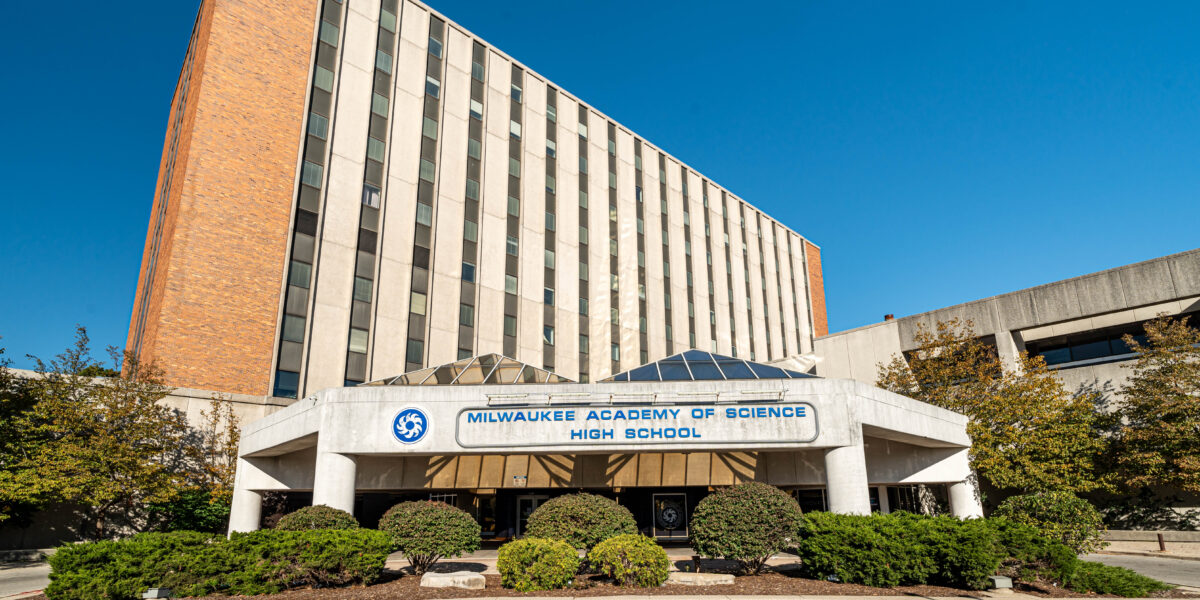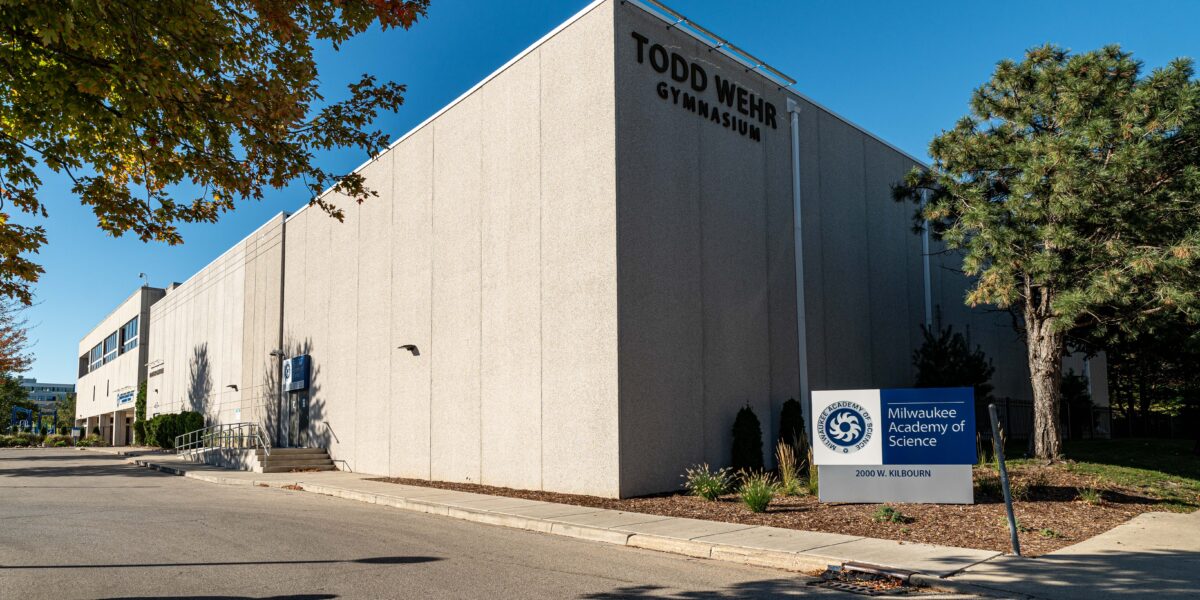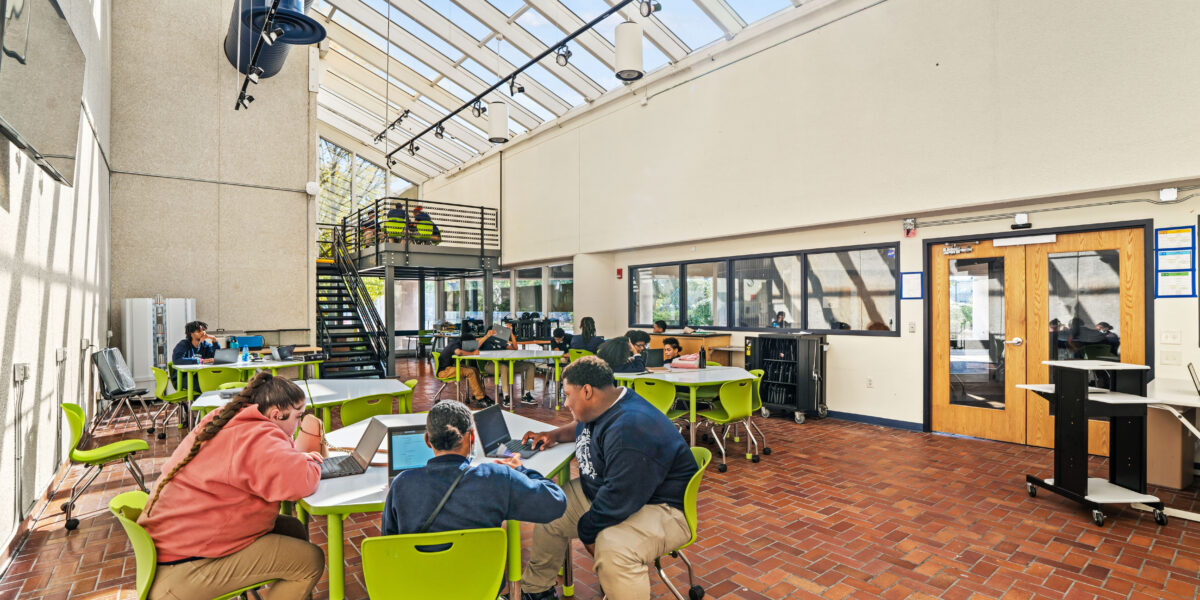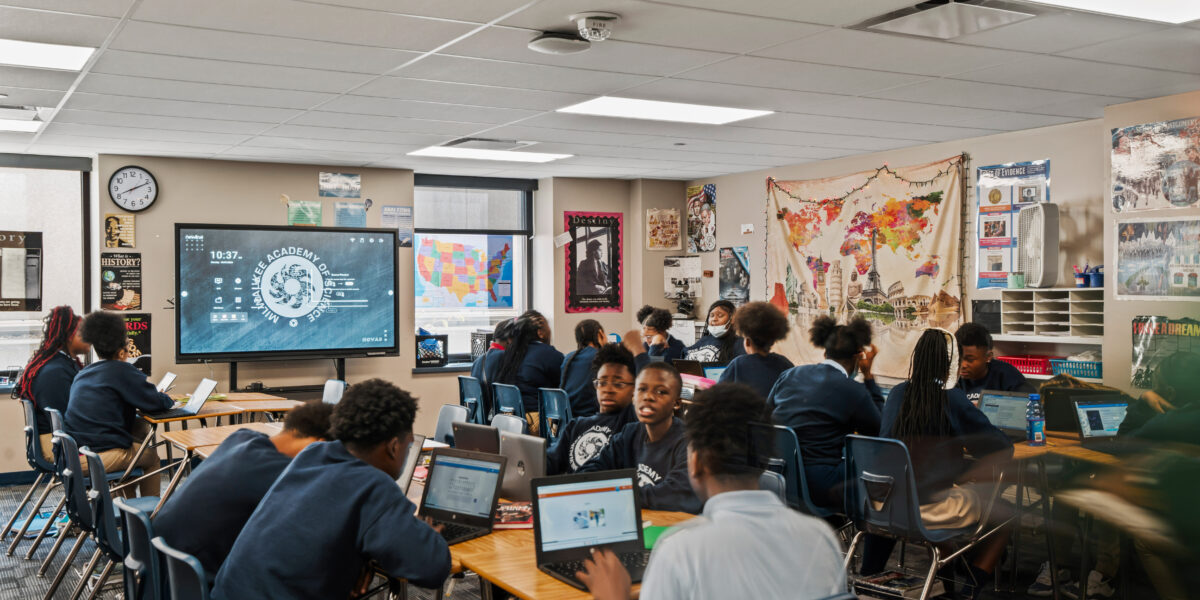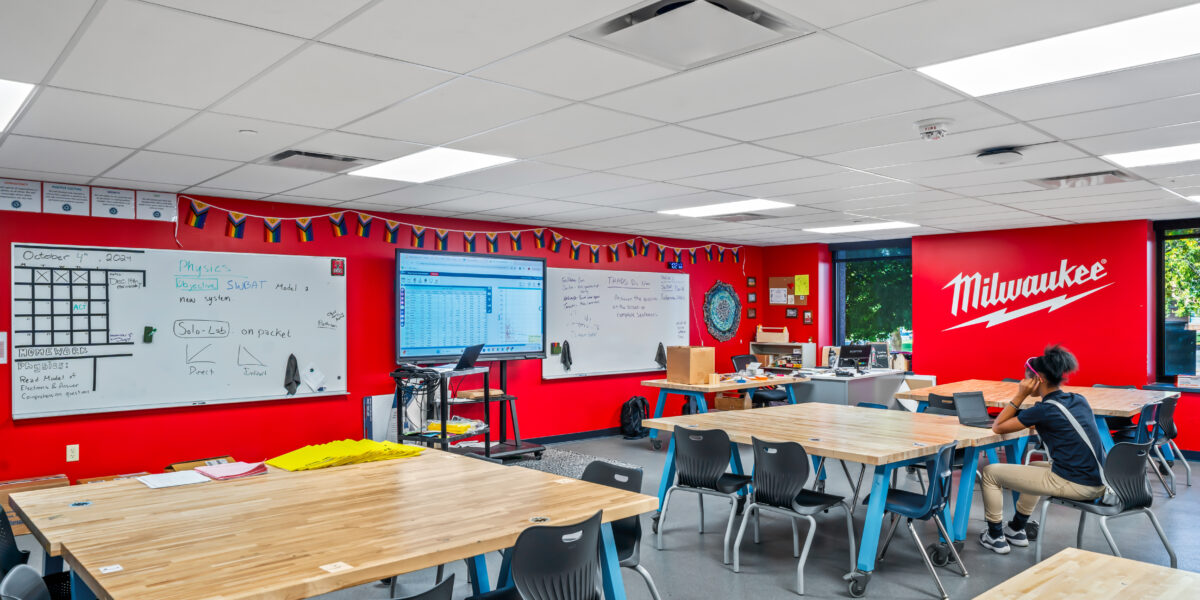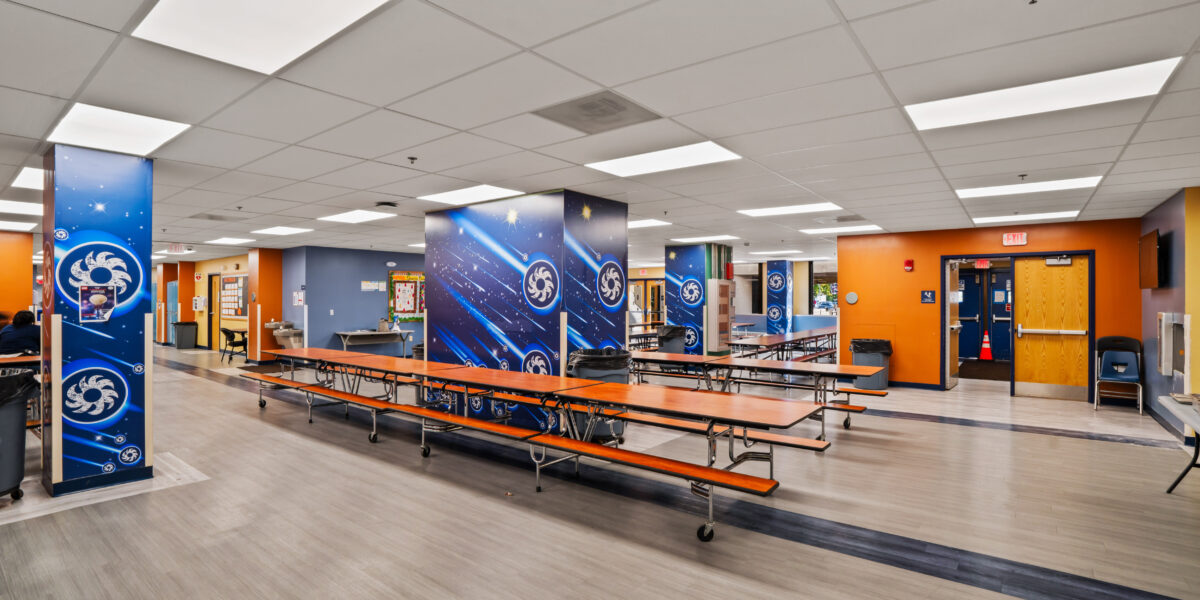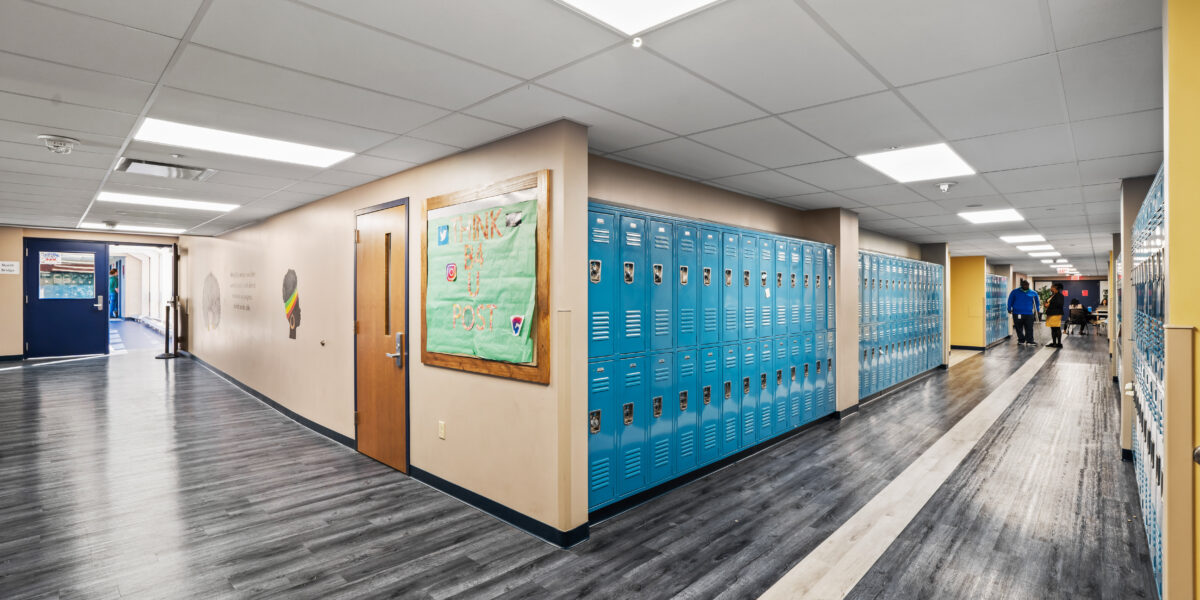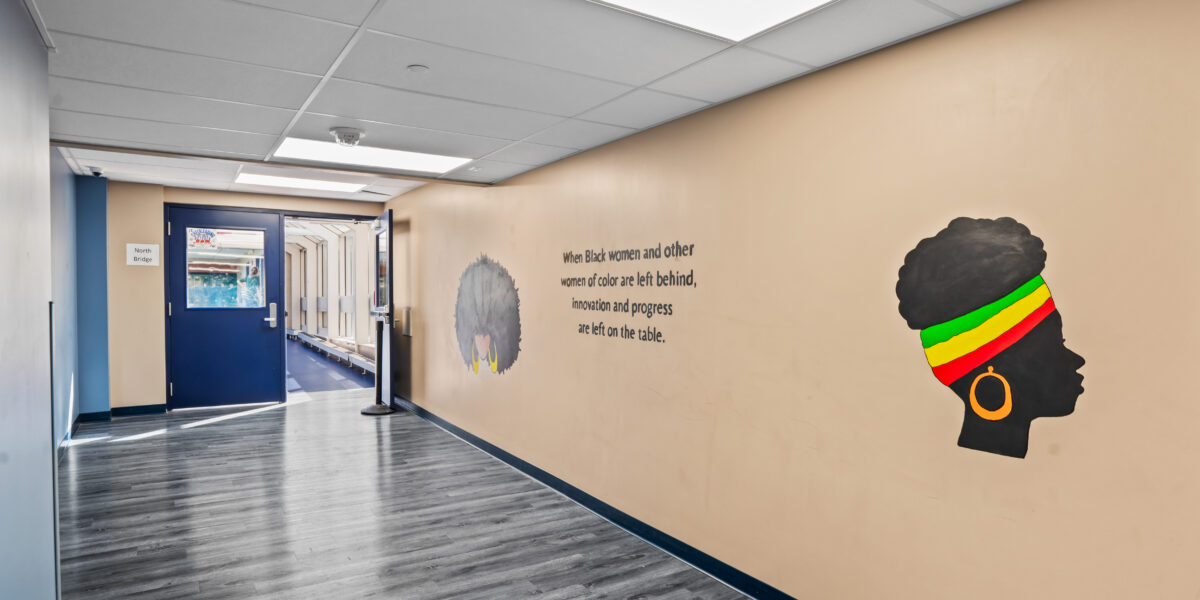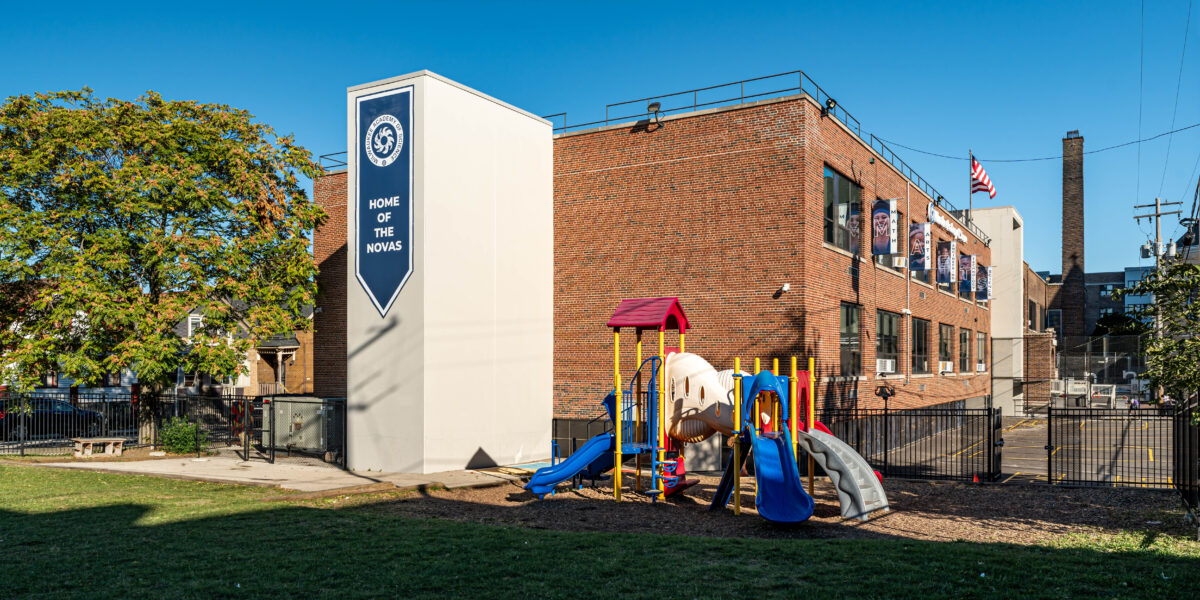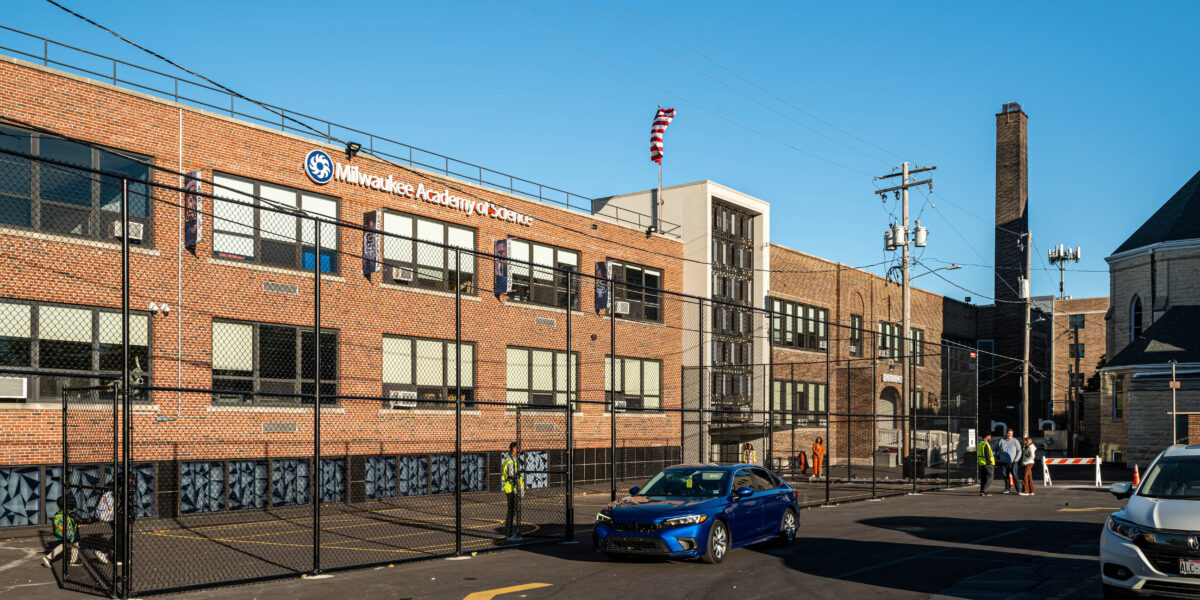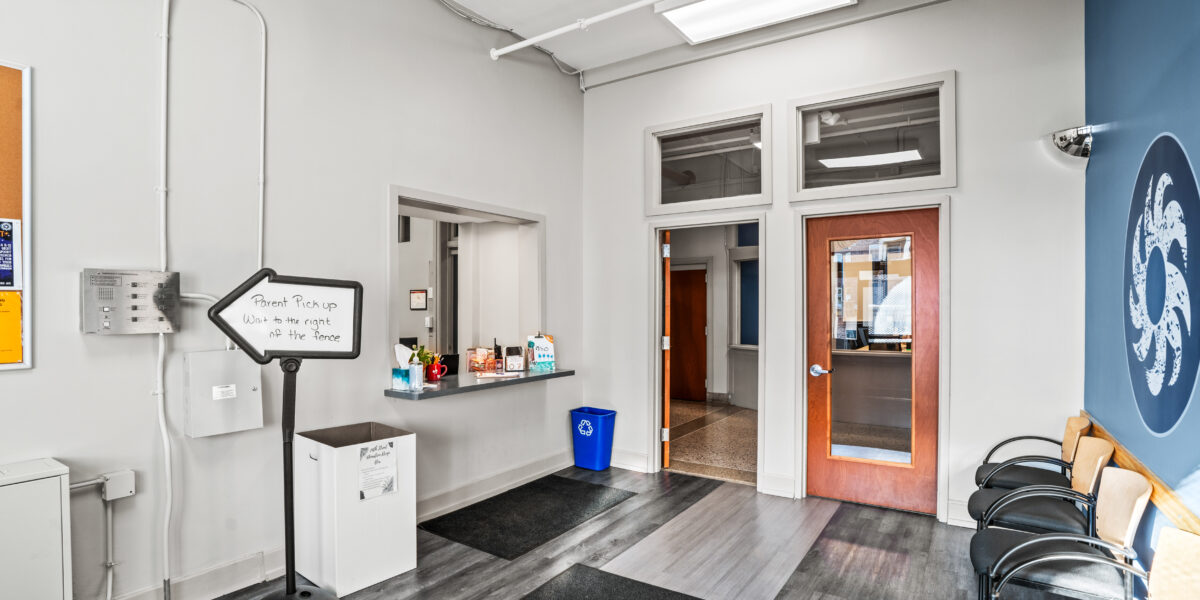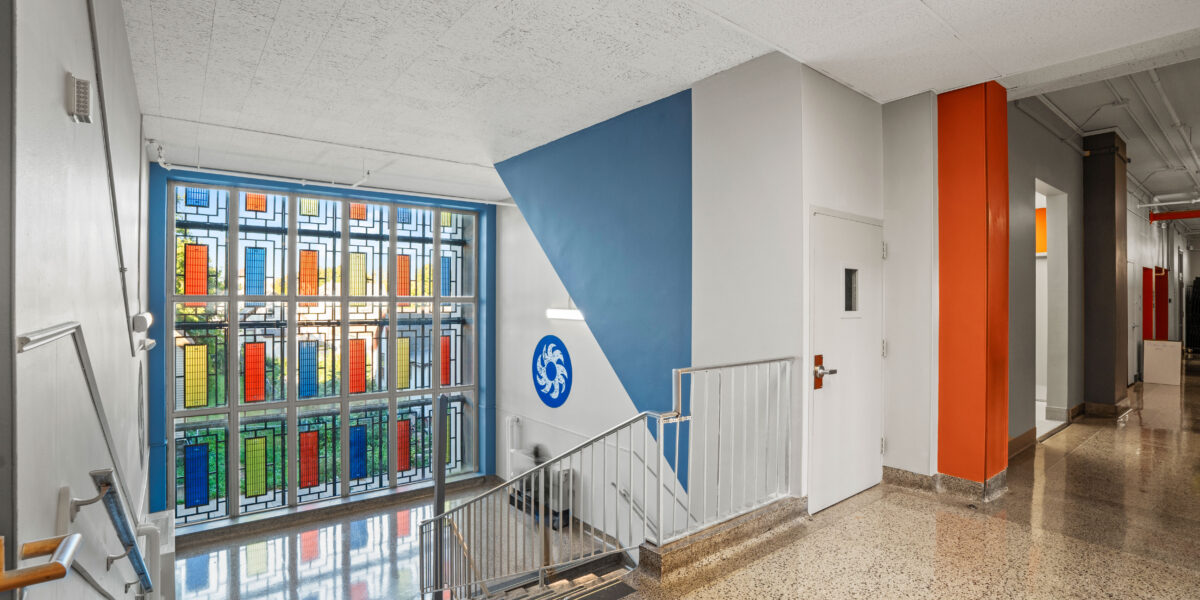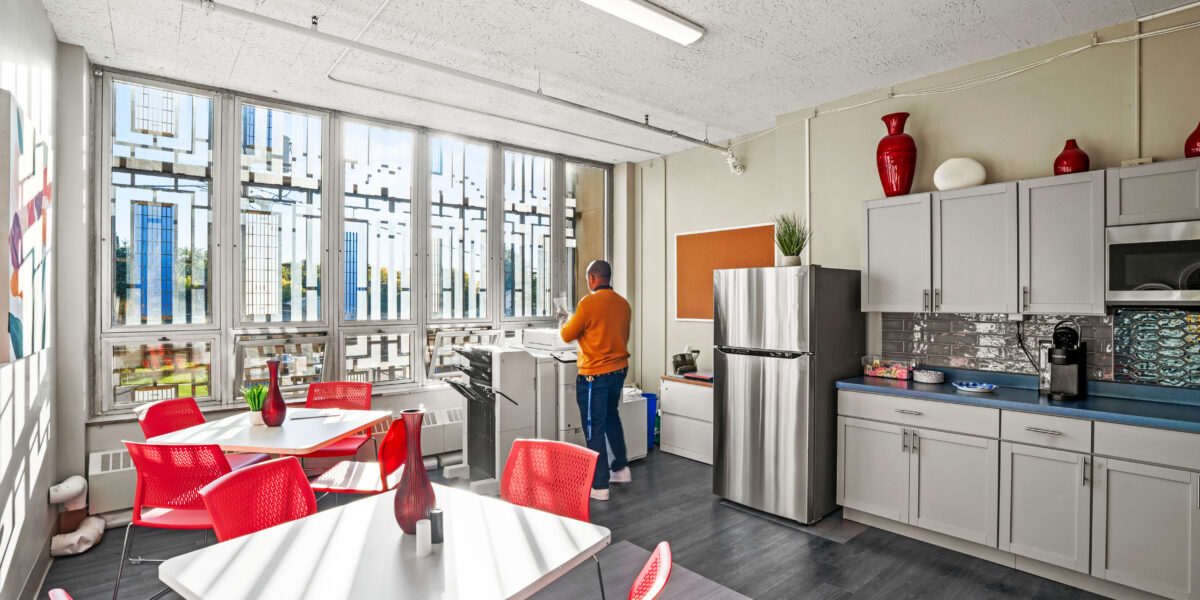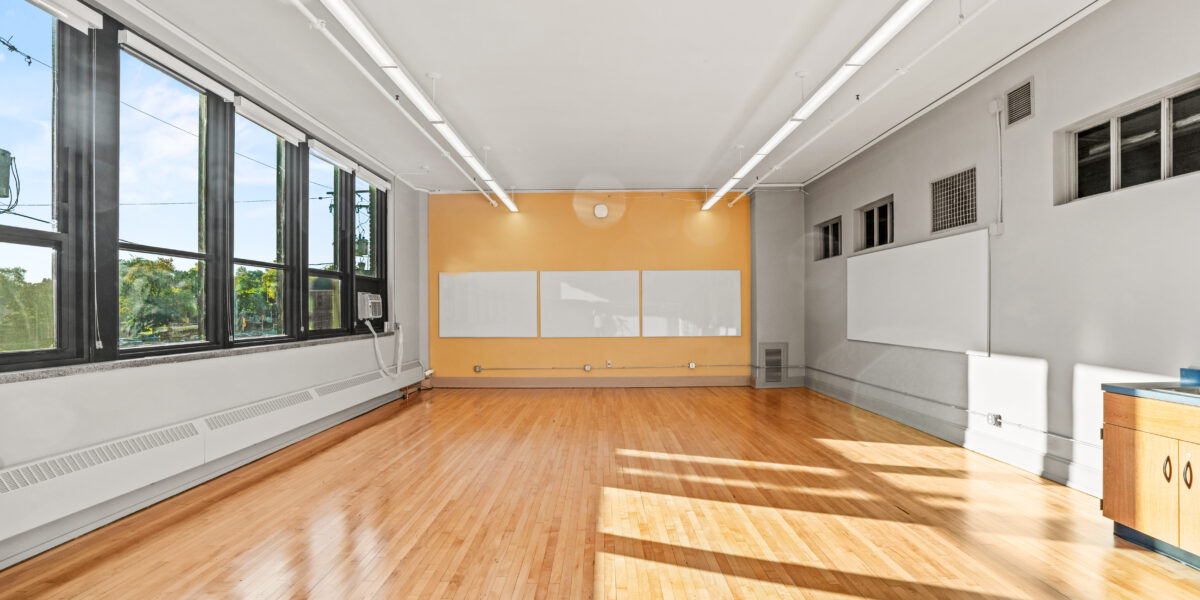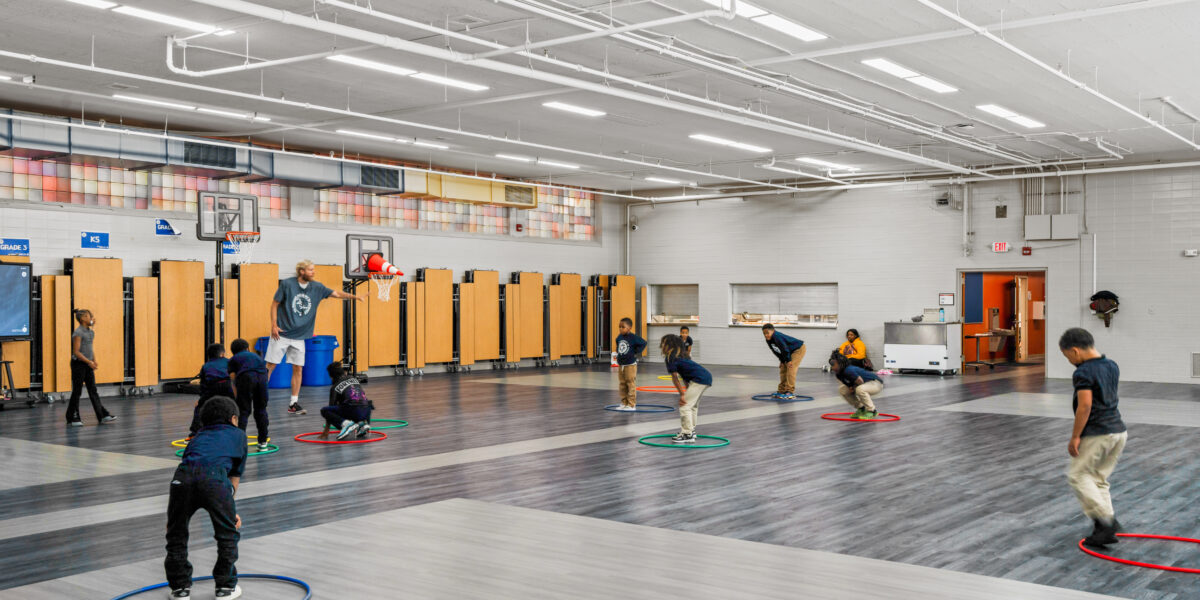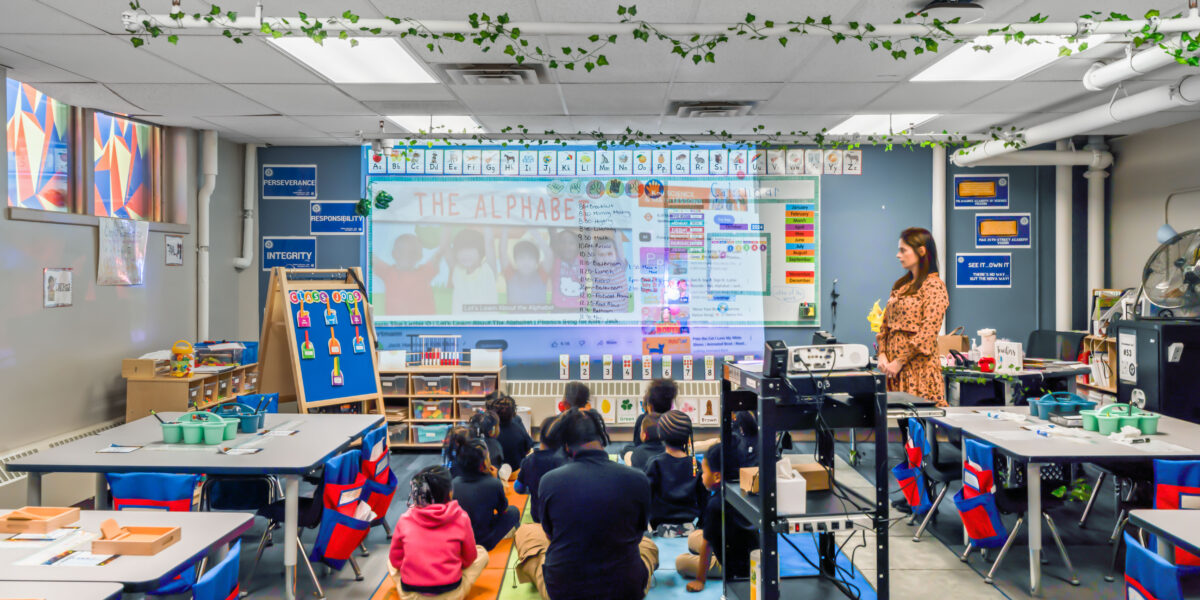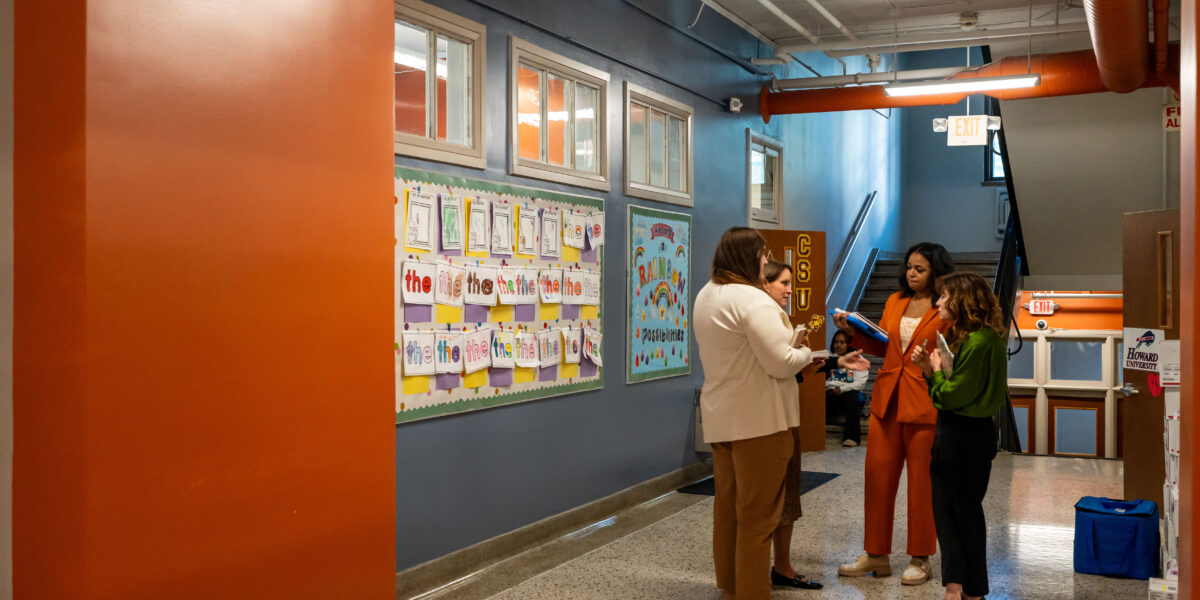In a Nutshell
What: With financing from IFF, K4-12 charter school Milwaukee Academy of Science has been able to renovate its facility and expand to a second location to increase its enrollment capacity to reduce its waitlist and provide more students with high-quality, STEM-based education.
Sector: Schools
Location: Milwaukee, WI
IFF Support: Three loans totaling $8.3 million closed between July 2021 and December 2023
IFF Staff Lead: Andrea Poole, School Consultant
Design: HGA
General Contractor: Gilbane Building Company
Impact: 855 student seats created
Earlier this year at Marquette University’s Varsity Theatre, 59 seniors from Milwaukee Academy of Science (MAS) walked across the stage to accept their high school diplomas. As they celebrated the occasion with family members, classmates, friends, teachers, and school staff, each of the graduates did so with the knowledge that the milestone was both the culmination of years of hard work and dedication and the gateway to the next chapter in their lives. And while that’s true of countless high school graduations across the country, this group was unique.
Like nine graduating classes before them, every member of MAS’ class of 2024 had been accepted to college and, between them, secured more than $4.3 million in scholarships to fund their post-secondary education – whether in the classroom or as an apprentice in the trades. Also unique to the class of 2024 was its size, which is likely to be the smallest moving forward for MAS due to the K4-12 public charter school’s expansion this fall to a second facility on the north side of Milwaukee that has increased its capacity by 600 seats. IFF provided $4.8 million in financing for the acquisition and renovation of the facility, which is conveniently located less than a mile from MAS’ main campus and will bring the school’s total enrollment to 2,000 students by 2026.
“In the past six years, our waiting list grew from 65 students to about 1,600 kids, and opening a second campus hasn’t eliminated the list, but it’s certainly reduced it,” says MAS CEO Anthony McHenry. “Every child deserves a high-quality neighborhood school, and there are too many children in this city whose life outcomes are impacted because they don’t have access to that. We want to provide that opportunity for more kids on the north side of Milwaukee.”
Founded in 2000 by T. Michael Bolger, then the president of the Medical College of Wisconsin, with the explicit goal to address an achievement gap in the health sciences between white and BIPOC students in Milwaukee, MAS began as a K-8 school with 780 students. Emphasizing STEM education and intentionally building pathways for students to pursue careers in Milwaukee’s health care sector through its curriculum, partnerships with local employers, and a board of directors comprised of local health care and post-secondary education leaders, MAS grew quickly. That growth soon necessitated an expansion to serve K4-12 students, a testament to the demand that exists on the north side of Milwaukee for high-quality schools with rigorous academic standards and the ability to support students and families living in an area of the city where long-term disinvestment, redlining, and other forms of structural racism have contributed to high poverty rates.
“Every child deserves a high-quality neighborhood school, and there are too many children in this city whose life outcomes are impacted because they don’t have access to that. We want to provide that opportunity for more kids on the north side of Milwaukee.”
“One of the factors that has enabled our students to succeed is the fact that we’re a K4-12 school, which gives us the ability to serve children and families over an extended period of time and have more ownership over academic outcomes,” says McHenry. “We’ve also really focused on retention by doing things like providing bus transportation to students – regardless of where they live in the City of Milwaukee. Ninety-seven percent of our kids are living in poverty, and many have to move from house to house – sometimes multiple times in the course of one year – but we can still make sure they get to school and have the opportunity to benefit from a very robust, intensive curriculum that prepares them to succeed after they graduate.”
By expanding to its new 24th Street Campus, which will exclusively serve K4-8 students once it reaches full capacity in the coming years, MAS has continued a steady expansion that has necessitated several facilities projects since the school opened on a 5.96-acre, former hospital campus. Operating initially in a single building, in 2005 MAS renovated the bottom two floors of an 11-story, 293,693-square-foot tower elsewhere on the property to facilitate the school’s expansion to serve K4-12 students.
Then, with a ballooning waiting list and no ability to enroll additional students, MAS used a $3.5 million loan from IFF in 2021 to complete renovations to the third floor of the tower and to build a gymnasium adjacent to the facility that enabled the school to increase enrollment capacity by 255 students. As part of the renovations, MAS created several “trade labs” to expose middle and high school students to potential career paths, as well as a high-tech recording studio to learn about music and podcast production.
While MAS could have continued to redevelop the more than 139,000 square feet of space in the tower that remains unoccupied, the school opted instead to preserve a community asset nearby that otherwise might have remained permanently vacant. Previously the home of a Montessori school that closed at the end of the 2023 school year, the 55,868-square-foot facility included 37 classrooms, was structurally sound, and had recently upgraded building systems. Located immediately northwest of MAS’ main campus, the facility also offered the school the opportunity to expand in a community with significant need for additional high-quality options for K4-12 education without being forced to invest in a new fleet of buses to get students to the school each day. To prepare the facility for the start of the 2024 school year, MAS completed extensive cosmetic upgrades and improved building security.
“Kids deserve to learn in a place that’s beautiful and welcoming, where they and their families want to be, and so we focused our resources on creating that. I think the building today is one of the best-looking schools in the city.”
“We were fortunate to find a building that didn’t need major renovations, but the look and feel of the facility didn’t show an appreciation for the students and staff who would be using it on a daily basis,” says McHenry. “Kids deserve to learn in a place that’s beautiful and welcoming, where they and their families want to be, and so we focused our resources on creating that. I think the building today is one of the best-looking schools in the city.”
Now two months into the school year, MAS is focused on reaching its enrollment capacity in the new facility and exploring options to further reduce its waiting list while offering new programming and career pathways for its students. To accomplish this, MAS is in the early stages of planning for another renovation of the tower at its main campus that would add 20,000 square feet of flexible space on the fourth floor. Envisioned as a multipurpose area, the floor would include dedicated space for workforce development programming that enables MAS students to remain on the campus for job training and licensure programs.
“If you’re a kid in Milwaukee who isn’t academically advanced enough to be able to test into one of the city’s highly selective schools, it’s critically important to have the opportunity to attend a quality high school that provides you with the tools to succeed academically and a path to succeed in post-secondary education and a career,” says McHenry. “We’re going to continue to expand so that we’re able to serve more students, and to offer additional programs and resources that create opportunities for them to thrive in school and in life. There’s a tremendous demand for that, and where we’re headed in the future is really exciting.”
